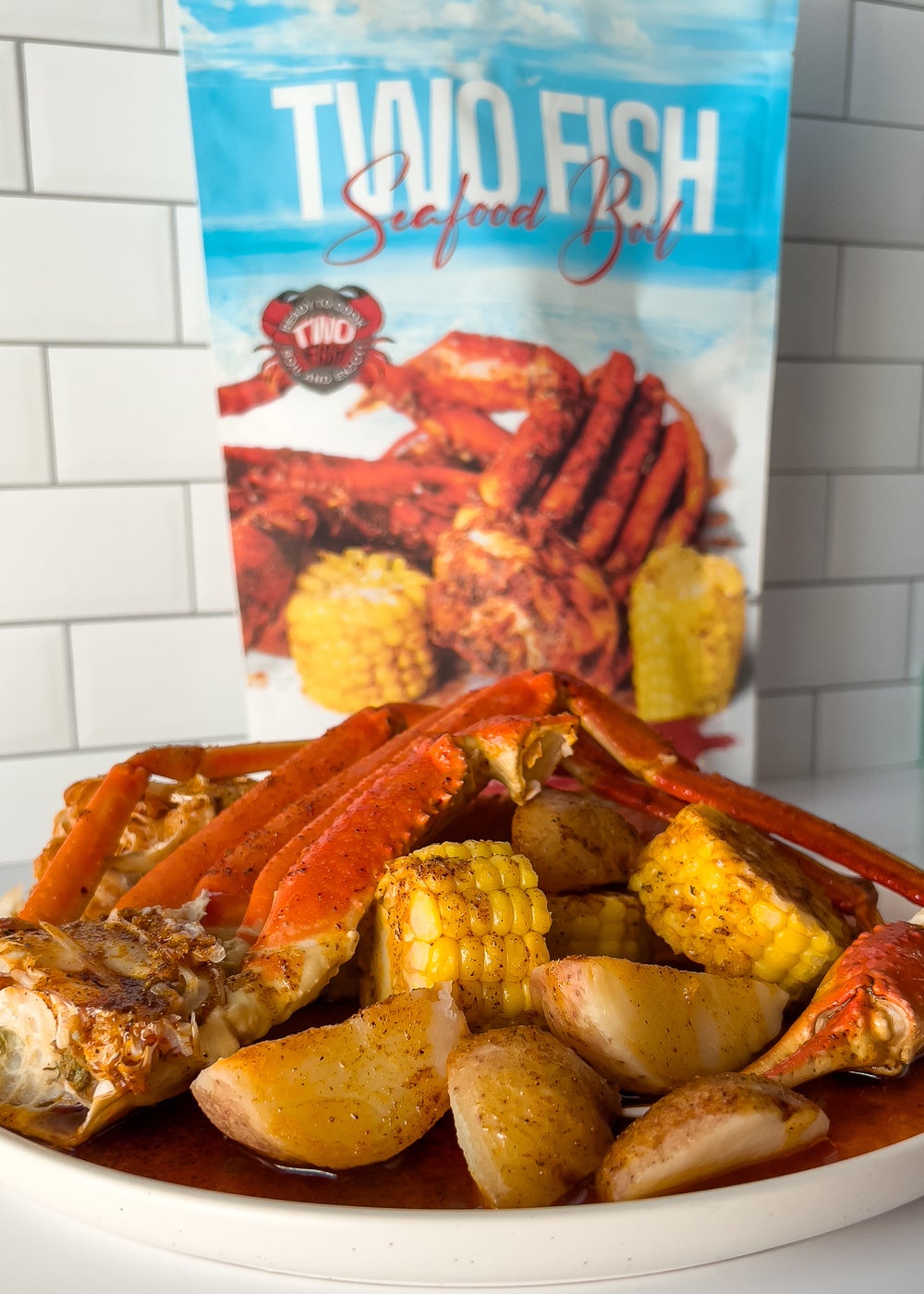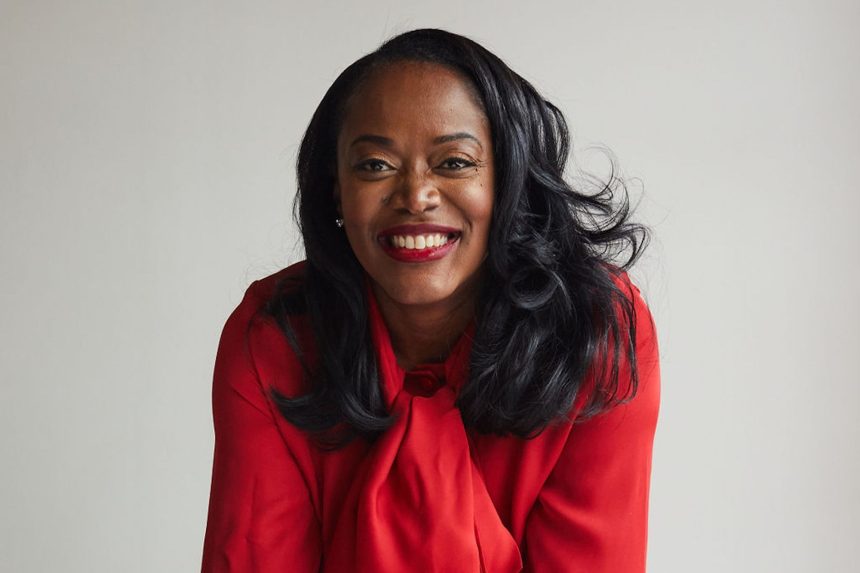At Yasmin Curtis’s popular seafood restaurant Two Fish Crab Shack, it wasn’t unusual for people to wait two and a half hours to indulge in à la carte-style seafood boils. The restaurant, which opened in 2016 in Chicago’s Bronzeville neighborhood, was inspired by a crowd-pleasing seafood Fridays concept Curtis had introduced at her former sports bar just a few blocks away.
Image Credit: Courtesy of Two Fish Distribution. Yasmin Curtis.
Unfortunately, like many small businesses, Curtis’s Two Fish found itself in hot water in 2020 during the pandemic.
“Everybody thought that we would just be down for two weeks for sure,” Curtis tells Entrepreneur. “So I was like, Okay, great. So we’ll just be out for two weeks. In Chicago, it was open, closed, open, closed. And once everything started happening with the media and so forth, I was like, This is going to be something very different.“
“We wanted to make sure that they could just get it and go.”
Curtis wanted to adapt Two Fish’s offering to meet the ongoing challenge. Plus, she was convinced that even after the pandemic waned, customers would no longer stand in line for hours for their seafood fix. The solution? Two Fish Foods, a frozen product that customers could purchase in-store and cook at home within minutes.
“Some people weren’t even trusting food being delivered to their homes,” Curtis recalls, “so we wanted to make sure that they could just get it and go.”
Two Fish’s frozen seafood bags, which feature shrimp, snow crab legs and a signature sauce, were an instant hit at a vendor fair held by local grocery store chain Mariano’s, a Kroger brand.
To position her salty side hustle for success, Curtis splashed Two Fish’s logo across the side of a rented ice cream truck, filled the vehicle with 100 bags of frozen product and set up shop in front of a fitness center. Everything sold out in just 20 minutes.
Related: Her Side Hustle Landed in Costco and Made $3 Million Last Year Even Though She ‘Didn’t Know Anything About Running a Business’
Naturally, Mariano’s was intrigued by Two Fish’s success — and wanted to stock the brand.
“The people at Kroger for Mariano’s were very instrumental in helping guide us [to] the right packaging and labels and actually getting us a distributor so that we could distribute to Kroger,” Curtis says. “From there, the product just kind of gained legs itself. It was a good product. People liked it. They saw it in the stores and wanted to buy it.”
Kroger began by stocking Two Fish in five Chicago-area stores; all of the product sold during the first weekend it was available.
 Image Credit: Courtesy of Two Fish Distribution
Image Credit: Courtesy of Two Fish Distribution
“It was not a smooth operation to be completely honest.”
From there, Two Fish entered several other local stores and continued to see strong sales. That’s when Curtis decided to hire a sales team and look into out-of-state markets. Two Fish then forged partnerships with other retailers, including Harris Teeter, Safeway, Phoenix and more. Between those retailers and nationwide distribution in Kroger, Two Fish is available in more than 5,000 stores, Curtis says.
And retail giant Walmart is next. Last summer, Curtis learned that Walmart would be in Chicago searching for local products made in the U.S. Although she was interested in the opportunity, her operations manager warned against it, as the young company was already struggling to keep up with growing demand. “It was not a smooth operation, to be completely honest,” Curtis says.
But another opportunity with the retailer would come in the form of its Open Call small business pitch program, which invites entrepreneurs to pitch their products made, grown or assembled in the U.S. for a chance to get on Walmart or Sam’s Club shelves or online. Curtis applied, well aware that “it could be a long shot in the dark.”
Then, she received an email notifying her that she’d been selected to attend the open call. Out of 20,000 applications, only 1,000 applicants were invited, Curtis says.
Related: She Started a Business With $2,000 of Personal Savings — Then Grew It to More Than $100 Million Revenue
“I am excited about Two Fish being a household name.”
Two Fish went and pitched the category manager, even cooking the product for them so they could have the whole experience — and they loved it, Curtis says. Now, Two Fish is fully onboarded with Walmart and expects its products to hit shelves in about 500 stores this October.
Some days, Curtis still can’t quite believe that Two Fish has become a nationwide product in such a short period of time. “I am excited about Two Fish being a household name and being synonymous with being a seafood boil company, as Van de Kamp’s [is] with fish sticks and SeaPak [is with] fried shrimp,” she says.
Of course, Two Fish’s highly successful pivot — which was entirely bootstrapped — wasn’t without some challenges along the way.
Going from restaurant to consumer packaged goods (CPG) came “with a completely different learning curve” and another set of food regulation guidelines. Although a restaurant might know where they source their fish, a company selling packaged goods “has to know the pond the crab legs come from” to meet sustainability and traceability standards, Curtis says.
Related: After a Cancer Scare, She Bootstrapped a Business From Her Kitchen to 3,500 Walmarts. Here’s Her Secret Ingredient for Health — and Success.
The distance between CPG businesses and their customers also introduces another hurdle, Curtis notes. If a customer has an issue at a restaurant, the business owner can go to their table and address it; that’s not possible when they purchase a product and take it home.
“So the level of precision that you have to take for each and every product is a lot greater than it seems,” Curtis says. “[It’s not], ‘Okay, we can just throw it in a bag.’ That’s a huge misconception. When you’re sending out thousands of products a month, you don’t have the opportunity to make a correction if something is wrong.”
“You want them asking about you, and you have to create that buzz yourself.”
Any entrepreneur with their eyes on CPG would do well to remember that the space comes with unique challenges, even if they have ample business experience under their belts, as Curtis did.
Curtis also suggests really getting to know the specialty foods you’re trying to sell — and building enthusiasm and customer support for your product. “I know this is so cliche, but I remember being in sales many years ago, and they say you want the people to come to you, however you need to do that,” she says. “Because you want them asking about you, and you have to create that buzz yourself. [People have to] authentically like your products.”
This article is part of our ongoing Women Entrepreneur® series highlighting the stories, challenges and triumphs of running a business as a woman.
Read the full article here










